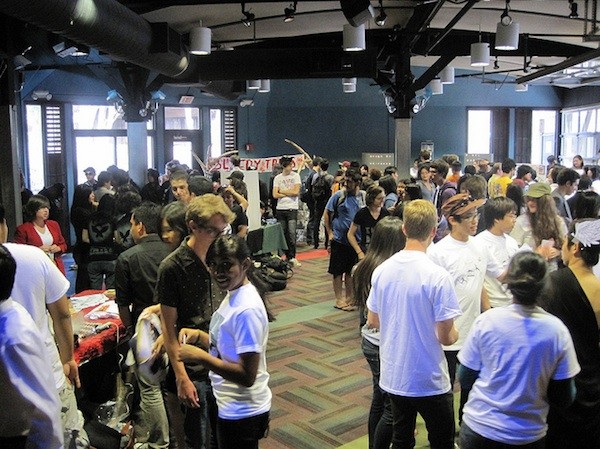Going Low-Tech to Teach New Literacies

Ethnic Studies professor Wayne Yang takes a distinctive approach to new media literacies to get UC San Diego students to host their own Comic-Con comic book convention with original graphic novel projects.
Although print artifacts are central to the culminating activity of the course, students also work on their digital skills as they lay out pages in software programs such as Adobe Photoshop or post the video “trailers” that advertise their wares on sites such as YouTube.
In an interview, Yang described how his work in the classroom with comic books was influenced by Ernest Morell. He argued that “critical literacy” in both K-12 and college environments could be improved by engaging with “a taxonomy of different kinds of literacy,” including “traditional media literacy (reading and writing in traditional sense)” and “new media literacy (digital literacy).” To create their printed texts, students worked not only with sketches but also with “genres and types of genres, fluency and deliberate decisions, and the intellectual rigor of learning to cross-analyze texts, such as Greek myths, news about current events, and popular media to think about representation in new ways.”
Despite Yang’s use of sources from daily life, the work done is not generated “in lieu of academic literacy.” Yang asked his students to read “books, film, and fashion” and to apply analytic frameworks that enhance their understanding of “structures of oppression, structures of injustice,” which included “heteronormativity and colonialism.”
When students create sophisticated comic books, “you have a better sense of authentic engagement, because students aren’t just regurgitating or summarizing material merely with academic jargon.” According to Yang, such students learn “how to perform theory without polysyllabic words” and how to feel as well as to articulate.
Yang also explained that his work was influenced by the expeditionary learning movement, where rafting and ropes courses that present students with a challenge could encourage students to engage more deeply in their learning experiences. Wang acknowledged that he wasn’t always a “big fan” of certain aspects of this school of thinking about what works in education, but he agreed that its “body of literature” provided some useful principles.
As Yang observed, “anything can be an expedition.” By organizing an on-campus convention showcasing their graphic novels to public audiences, students in his course on “Worldmaking“ can “apply theory to practice and do experiential work without going into the field.”
Getting outside the lecture hall to hawk comic books is also in keeping with the educational philosophy of active learning for which Sixth College is known. For example, Sixth College recently sponsored a regional conference on experiential learning, Education in Action, and the college was also one of the official partners at the recent international summit on the future of learning, “MobilityShifts." In the interview, Yang asserted that project-based learning succeeds when “the parameters are really clear, but there is enough variation, so that original and unique work can be generated by every student.”
Yang argued that new intersections of “traditional media literacies” and “new media literacies” in projects like the graphic novel project that also required students to work creatively with databases such as ArtStor and bookmarking sites such as Zotero could help students understand research methodology. “As students use tools they ask new questions. How do you conduct research? How do you write an analytical paper? You can develop a set of things that you have to know.” These forms of new media literacy push students more than more canned forms of multimedia learning, since the emphasis is on “not just how to show movies in class, but how to develop digital media skills.”
Banner image credit: catatsixth http://www.flickr.com/photos/catatsixth/5791050825/